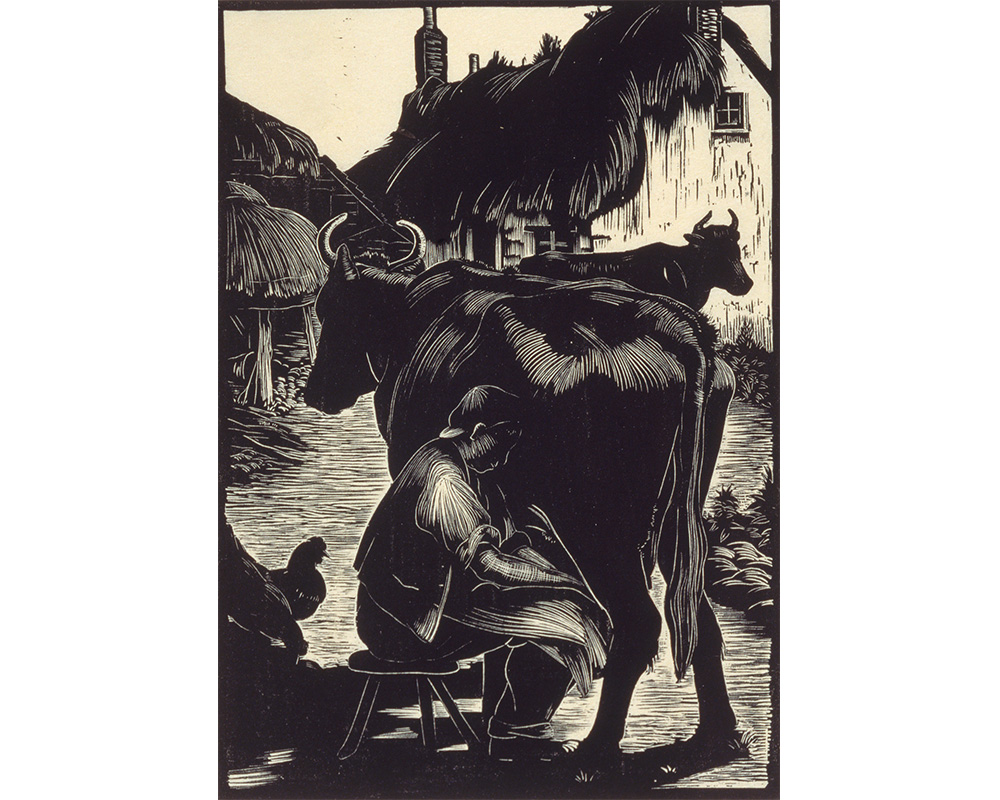
Clare Leighton: The blackest black to dead white
Maggie Kurkoski is a member of the Smith College class of 2012 and the Brown Post-Baccalaureate Curatorial Fellow in the Cunningham Center.
Born in England, a daughter of two writers, Leighton was told early on that “no woman is a lady by reason of being an artist. Only with difficulty can she be a lady in spite of it.” Despite such dire warnings from her mother, her artistic career took off in 1925, when she graduated from the Slade School of Fine Arts, and rented a room as a drawing studio. While she did give private lessons during this time, she was offered a full time teaching position in London and refused. Despite the appeal of a steady salary, she refused, saying that when it came to art and a teaching career, “you can’t do both.”
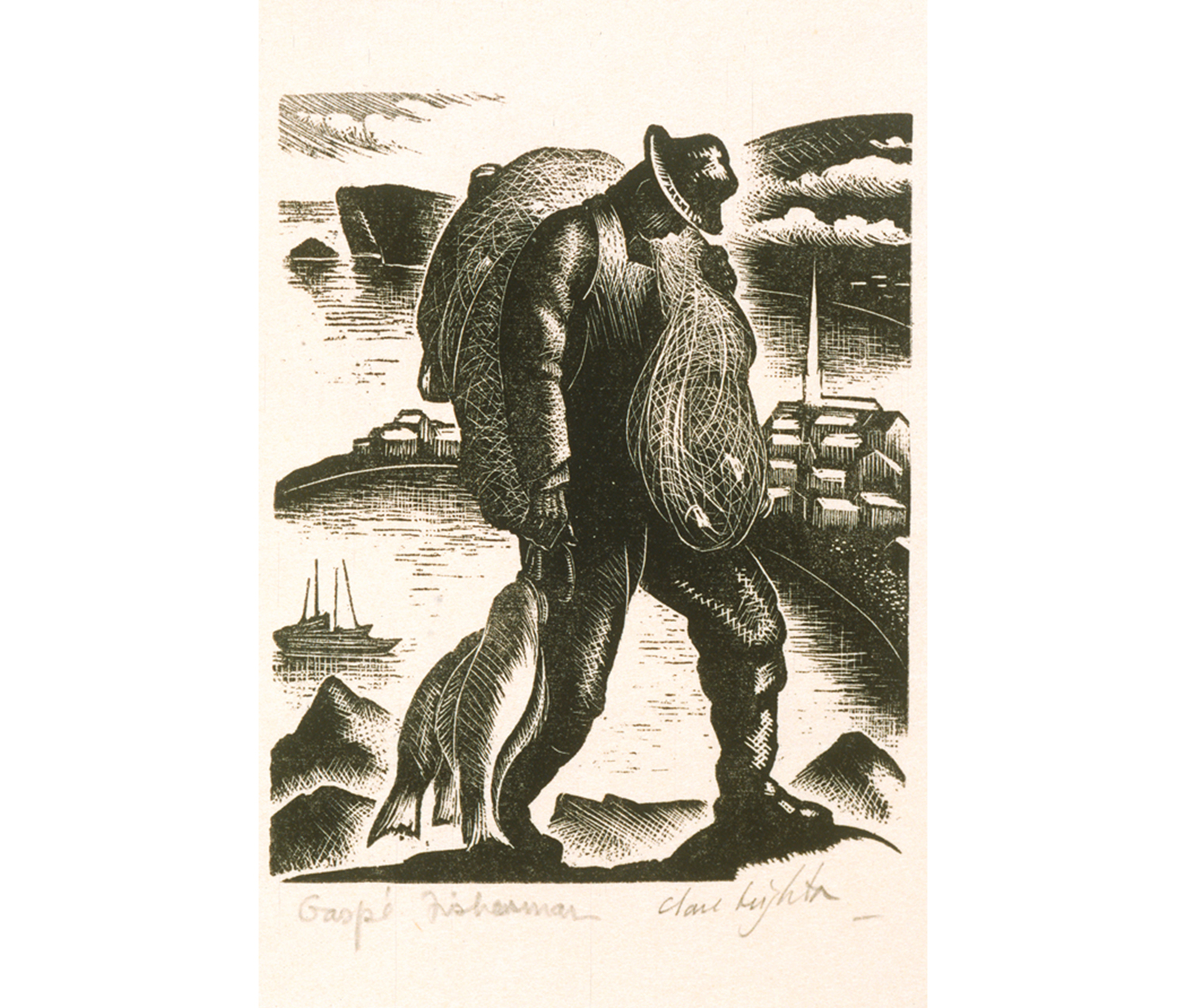
Clare Leighton. American, born in England, 1899–1989. Gaspé Fisherman. Wood engraving printed in black on white wove paper. Bequest of Henry L. Seaver. Photography by Petegorsky/Gipe. SC 1976.54.411.
Leighton was drawn to wood-engraving, the process of printing from an engraved block of wood. It allowed her to introduce light to the wood block, a spiritual act which she saw as “a sort of Genesis.” Her works were often tranquil contemplations on nature and those who worked it. A pacifist in a time of turmoil -- her nineteen-year old brother and many of her friends died in the first world war -- her prints reinforce man’s connection to the earth, and present a powerful alternative to the destruction around her. She felt compelled to preserve her vision of rural life to paper, too, in light of the rushing industrialism that destroyed the environments around her.
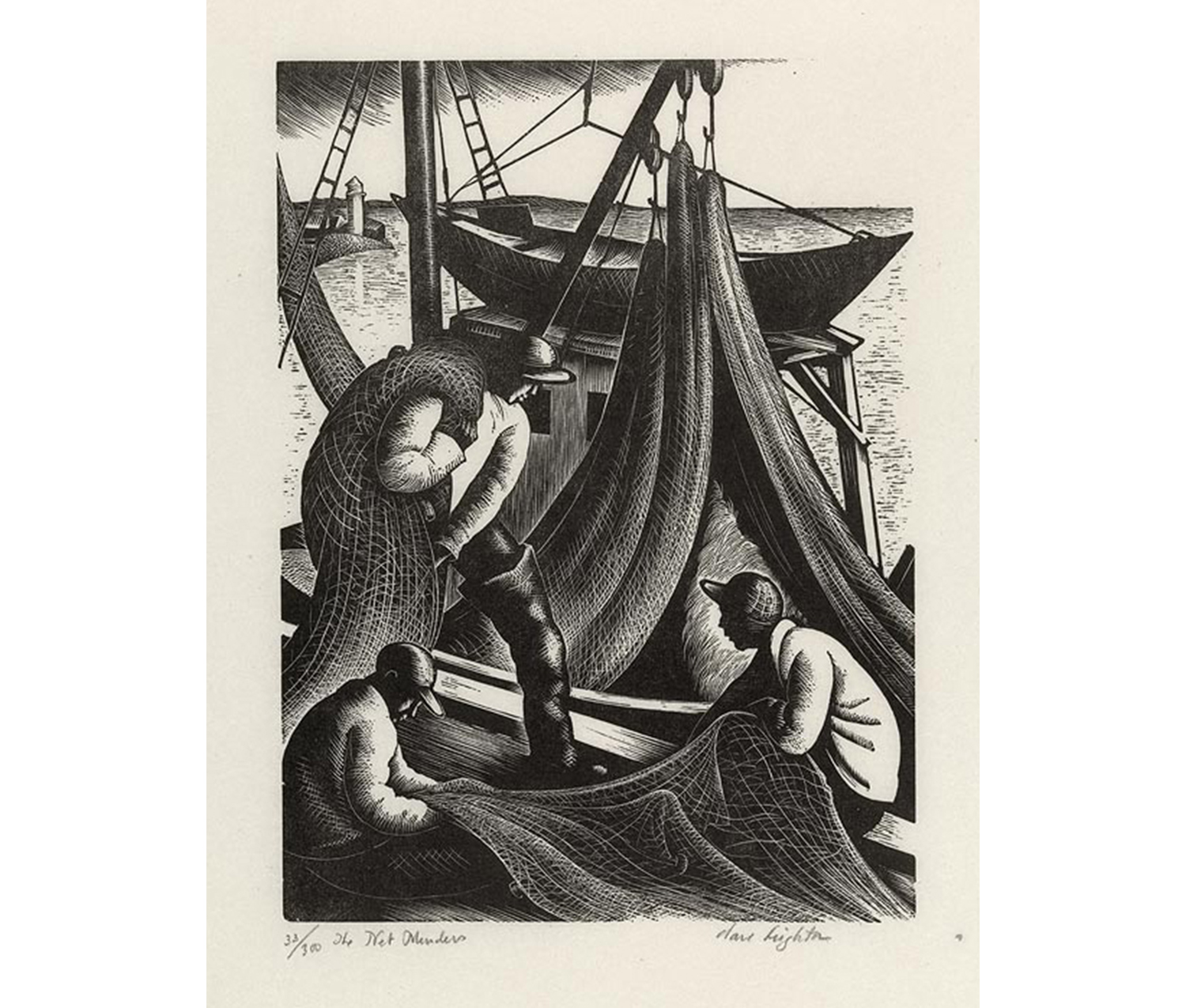
Clare Leighton. American, born in England, 1899–1989. The Net Menders. Wood engraving printed in black on thin, smooth white paper. Bequest of Henry L. Seaver. Photography by Petegorsky/Gipe. SC 2011.26.43.
Over her four decade career, Leighton proved to be an enormously productive individual: As an etcher, she created over 700 prints in her lifetime, her output surpassing that of her contemporaries both in plates and impressions. By 1945, Leighton became a US citizen, and settled in Cape Cod, Connecticut. She continued to create tranquil prints that celebrated the people and lands around her.
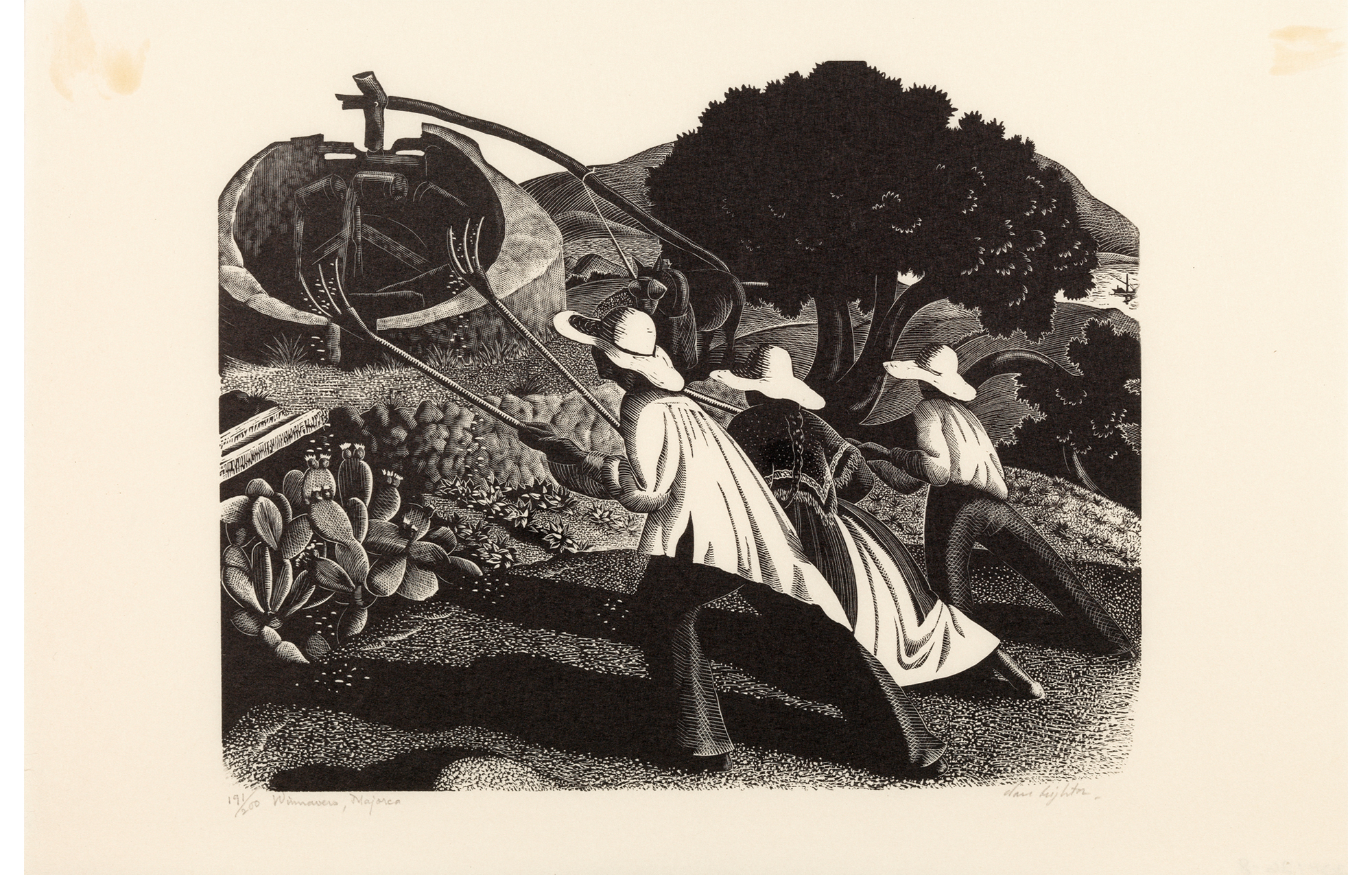
Clare Leighton. American, born in England, 1899–1989. Winnowers, Majorca, 1939. Wood engraving paper. Gift of Mr. and Mrs. Edward H. Kent (Sara Evans, class of 1911). Photography by Petegorsky/Gipe. SC 1951.221.
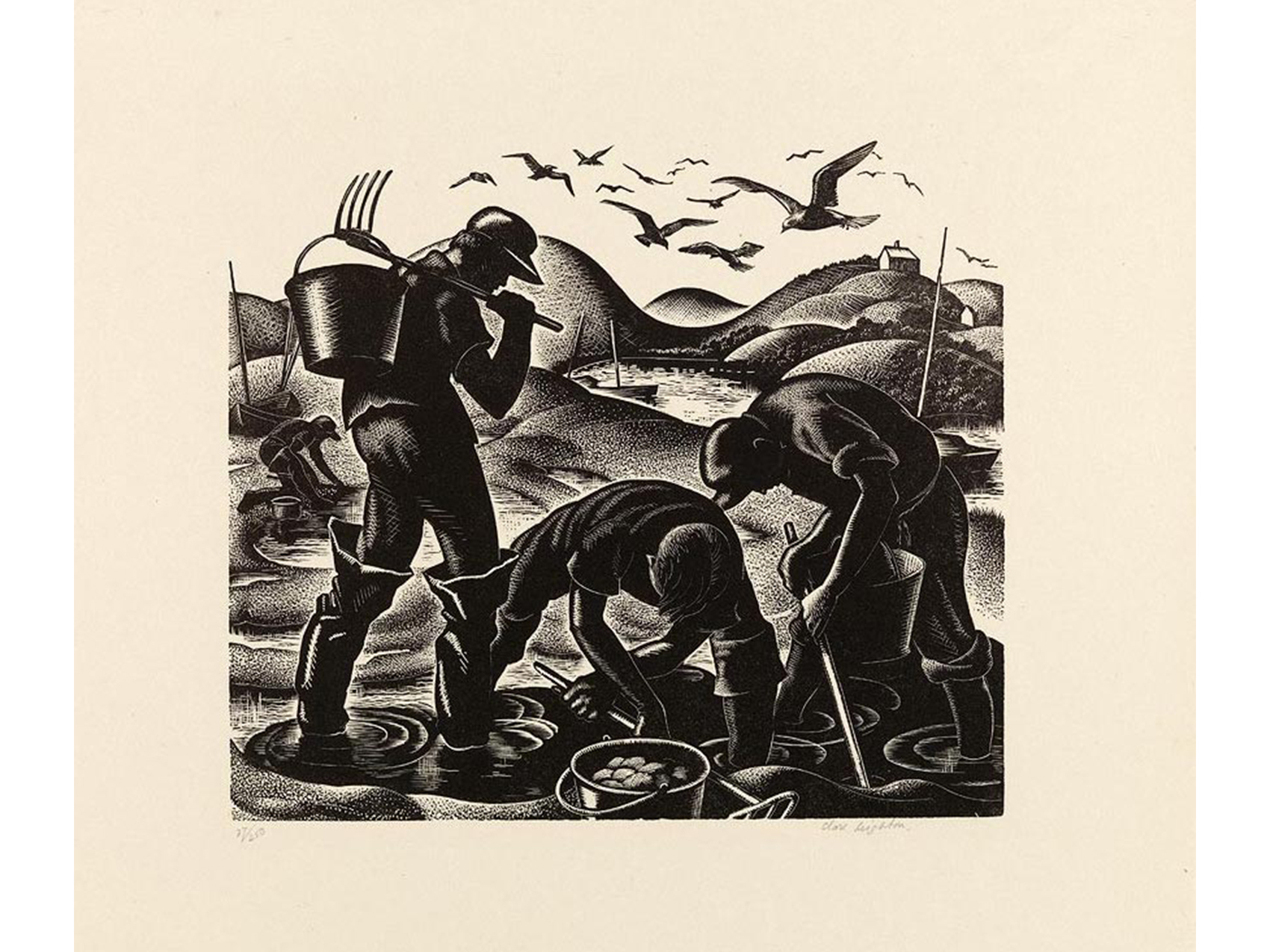
Clare Leighton. American, born in England, 1899–1989. Clam Diggers, Cape Cod, 1946. Wood engraving on medium weight, moderately textured, beige paper. Bequest of Henry L. Seaver. Photography by Petegorsky/Gipe. SC 2011.26.7.